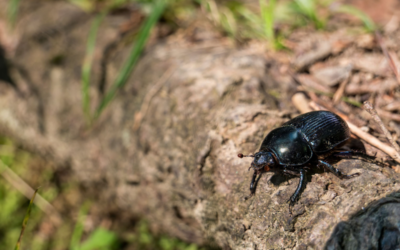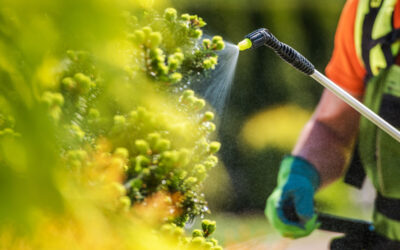If you’ve ever wondered why some leaves turn red while others turn orange, yellow, or brown—or stay green all year long—the answer hides just below the surface. The leaves, you see, aren’t naturally green at all.
So Why Are They Green in the First Place?
The green color of leaves is caused by a process you learned about in grade school—photosynthesis—and the leaf cells that make it possible.
Photosynthesis uses sunlight and water to make nutrients like sugar to feed the tree. That process takes place in the leaves’ chloroplasts, tiny organlike components chlorophyll cells, the green fluid that’s created in the leaves. Since chlorophyll cells are generated by the millions during photosynthesis, they fill the leaf structure with their green coloration, masking the leaf’s natural pigmentation.
What’s the Leaf’s True Color?
The color of a tree’s leaf pigmentation depends on the species. Most Colorado natives like beech, cottonwood, hickory, aspen, and birch have yellow and orange pigmentation from carotenoids, the same bioflavonoid that gives carrots their distinctive color.
Sumac, mountain ash, scarlet oak, and red maple are trees with red and purple leaves, caused by anthocyanin, a bioflavonoid also present in blueberries and purple cabbage. Normally produced only in fall, dry weather, low temperatures, and other stresses can accelerate production of anthocyanins, leading to earlier and deeper leaf color.
When sunlight diminishes and temperatures fall, the tree beings closing off the vessels providing water to its leaves, causing chlorophyll production to shut down and reveal the leaf’s true color.
When nutrients are completely cut off, the leaves dry out, turn brown, and drop.
What About Evergreens?
Evergreen needles are leaves with a different structure. Instead of wide, flat, and thin like on deciduous trees, the needles are essentially long leaves rolled tightly to conserve water. Since they hold more water than deciduous leaves, they stay green longer. They also have a waxy coating to cut down on evaporation in dry weather. When they eventually die and fall, they do it individually rather than all at once, keeping the tree green year-round.
Like deciduous trees, stresses can cause leaf (needle) drop in evergreens, usually from lack of water or pests and diseases.
Now You Know
Now that you know all about leaf color you can make informed choices about the trees and shrubs to plant in your landscape to give different fall colors. Of course leaf color is just one factor in choosing the vegetation that’s right for your environment. Other things like size, shape, function, and adaptability to your soils and climate are important considerations that may outweigh leaf color.
Your state or county extension service will have a list of trees right for your landscape, and specialty tree and garden centers or landscape designers can help with your choices. A professional arborist can help with planting and maintenance of the trees and shrubs year-round.
Trees and shrubs are a big investment with long-term benefits if chosen right. They can add 10% or more to your property value, so don’t hesitate to get professional advice on your planting choices.
If you need help adding the right trees and shrubs for your landscape, Donovan Arborists offers planting, pruning, and shearing services as well as a complete landscape maintenance package for property in the Denver area.
We’re always happy to give free estimates to homeowners and property managers for any services they may need.




